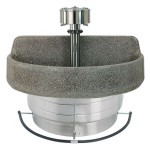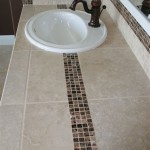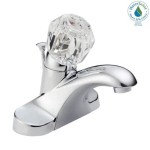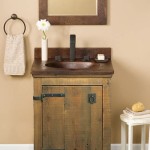The 1900 Bathroom Cabinet: A Reflection of Early 20th Century Domestic Life
The bathroom cabinet of 1900s, while seemingly a simple piece of furniture, offers a compelling glimpse into the domestic lives, hygiene practices, and design sensibilities of the turn of the century. Unlike the elaborate, multi-functional cabinets of today, the early 1900s bathroom cabinet was often a more modest and utilitarian fixture. Its presence, however, signified a growing emphasis on personal hygiene and the increasing accessibility of personal care items. Understanding its design, materials, and purpose provides valuable insight into the social and technological advancements of the era.
The transition from the late Victorian era to the Edwardian period brought with it subtle shifts in architectural and interior design. The ornate, heavily decorated styles of the Victorian era began to give way to simpler, more streamlined forms. This trend was reflected in bathroom design as well, with a move towards lighter colors, cleaner lines, and an emphasis on functionality. The bathroom itself was evolving from a mere functional space to a room that, while practical, could also be considered aesthetically pleasing. The bathroom cabinet played a role in this transformation, offering a dedicated space for storage and contributing to the overall orderliness of the room.
The placement of the bathroom cabinet was also significant. Typically, it was mounted on the wall above the sink, providing easy access to essential toiletries. This positioning also maximized space in what was often a relatively small room. The height was generally determined by practical considerations, ensuring that the cabinet was within comfortable reach for both adults and, in some households, older children. The cabinet's proximity to the sink reinforced its primary function as a repository for items used in daily grooming and hygiene routines.
Materials and Construction: A Study in Functionality and Durability
The materials used in the construction of 1900s bathroom cabinets varied depending on factors such as budget and regional availability. However, certain materials were more commonly employed due to their durability and resistance to moisture. Wood was the most prevalent material, with hardwoods like oak, maple, and pine being popular choices. These woods were relatively durable and could withstand the damp environment of the bathroom better than softer varieties. The choice of wood also influenced the overall aesthetic of the cabinet, with different grains and finishes contributing to its visual appeal.
Construction techniques were often straightforward, focusing on solid joinery and simple designs. Dovetail joints, mortise and tenon joints, and other traditional woodworking methods were used to ensure the cabinet's structural integrity. The emphasis was on creating a sturdy and long-lasting piece of furniture that could withstand daily use. Hardware, such as hinges and knobs, were typically made of brass or iron, reflecting the utilitarian nature of the cabinet. While decorative details might be present, they were generally understated, emphasizing functionality over elaborate ornamentation.
The finish applied to the wood was crucial in protecting it from moisture damage. Varnishes and paints were commonly used to seal the wood and prevent it from warping or rotting. Oil-based paints were often preferred due to their superior water resistance. The color palettes of the era tended towards lighter shades, such as white, cream, and pale gray. These colors reflected light and created a sense of spaciousness in the bathroom. However, darker wood finishes were also used, particularly in more elaborate or custom-made cabinets.
Design and Features: Simplicity and Practicality
The design of the 1900s bathroom cabinet was characterized by its simplicity and practicality. Unlike later iterations adorned with intricate moldings and mirrored doors, the early 20th-century cabinet was often a rectangular box with a single door or a pair of hinged doors. The doors were typically made of wood or, in some cases, featured a small mirrored panel. The interior of the cabinet was usually divided into shelves, providing storage space for toiletries, medicines, and other personal care items. The number of shelves varied depending on the size of the cabinet and the needs of the household.
Mirrors, when present, were typically small and rectangular, serving a purely functional purpose. They were often attached to the inside of the door or to the back of the cabinet. The quality of the mirror glass was generally high, ensuring a clear and undistorted reflection. The frame surrounding the mirror, if any, was usually simple and unadorned, reflecting the overall aesthetic of the cabinet.
Hardware played a crucial role in the design of the cabinet. Knobs and pulls were typically made of brass, iron, or porcelain. The design of the hardware was often simple and functional, with an emphasis on durability and ease of use. Hinges were usually made of iron or brass and were designed to withstand repeated opening and closing. The placement and style of the hardware contributed to the overall aesthetic of the cabinet, reinforcing its utilitarian character.
Contents and Function: A Window into Early 20th Century Hygiene
The contents of a 1900s bathroom cabinet provide a fascinating insight into the hygiene practices and personal care routines of the era. While the range of products available was significantly smaller than what is available today, the cabinet still contained a variety of essential items. These items reflected the growing awareness of personal hygiene and the increasing accessibility of mass-produced consumer goods.
Common items found in a typical 1900s bathroom cabinet included soap, toothbrushes, toothpaste or tooth powder, shaving supplies for men, and various medicinal remedies. Soap was a staple, with brands like Ivory becoming increasingly popular due to their affordability and availability. Toothbrushes were typically made of bone or wood with natural bristles. Toothpaste was not yet widely available, so tooth powder, a mixture of abrasive substances and flavoring agents, was often used instead. Shaving supplies included a straight razor, shaving brush, and shaving soap or cream.
Medicinal remedies were also commonly stored in the bathroom cabinet. These might include liniments for aches and pains, cough syrups, and various tonics and elixirs. The availability of over-the-counter medications was limited compared to today, and many households relied on home remedies and traditional treatments. The presence of these items in the bathroom cabinet reflects the importance of self-care and the desire to maintain good health.
Beyond practical necessities, the arrangement and organization of items within the cabinet reflected the values and priorities of the household. A well-organized cabinet signified orderliness and attention to detail. The contents of the cabinet also served as a reflection of one's personal grooming habits, and thus were often kept private. This contrasts with modern bathrooms where products are often displayed openly, the 1900s bathroom cabinet offered privacy and control over one's personal items.
The 1900s bathroom cabinet, therefore, serves as more than just a piece of furniture. It is an artifact that provides valuable insights into the social, technological, and cultural landscape of the early 20th century. Its design, materials, and contents offer a glimpse into the lives of those who used it, revealing their values, habits, and aspirations.

1900 Farmhouse Renovation Main Bathroom Before And After An Oregon Cottage

Fed 1900 Popular Antique White Modern Solid Wood Bathroom Vanity China Cabinet Made In Com

Cabinets Bellmont 1900 Contemporary Bathroom Furniture Kitchen Design Showrooms Laminate

Flores 75 Matte Black F Oak

Flores 75 Matte Black F Oak

Oliver 1900 Luxury Bathroom Fitted Furniture Suite Combination Vanity Unit Design Small

Bellmont 1900 Series Contemporary Bathroom Seattle By User Houzz

Refurbishment Of A 1890 1900 House Contemporary Bathroom Other By To Home Interiors Houzz

Oliver 1900 Fitted Furniture Suite Buy At Bathroom City

1900 Farmhouse Renovation Main Bathroom Before And After An Oregon Cottage
Related Posts







